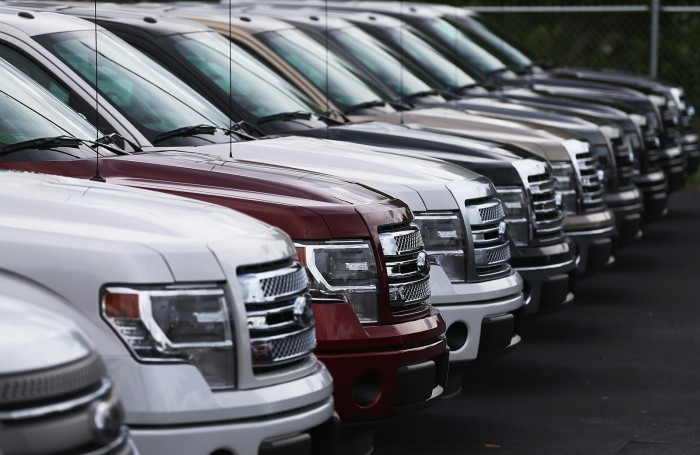Cheap Gas and Big Cars Are Killing Obama’s Fuel Economy Push
In 2011, President Obama announced an agreement made between 13 automakers to increase average fuel economy to 54.5 miles per gallon by 2025. Now two government reports suggest that cheap fuel and a love of trucks may make that unlikely.
Both the Department of Transportation and the Environmental Protection Agency have published draft reports which claim Obama’s 2011 promise currently looks out of reach. The agencies claim that a combination of sustained low fuel prices and an increasing popularity of trucks compared to cars. If things don’t change markedly, fuel economy might reach 50 miles per gallon at best.
The Corporate Average Fuel Economy program, the rules for which were tweaked in 2012, set a goal of 36.6 miles per gallon as an average fuel consumption for 2017 vehicles and a 54.5 miles-per-gallon average for 2025. While the former target looks set to be met, the 2025 figure looks less likely. That’s because forecasts were based on an assumption that demand for trucks would fall. But in fact, low fuel prices seem to have been increasing demand for light-duty trucks and SUVs, a trend that’s continued from last year.

If the auto industry is to right the trend, it will have to push cars with better fuel efficiencies upon buyers over the coming years. With a clear consumer desire for large vehicles and the electric car market still a relatively small and expensive slice of the automotive sector, though, manufacturers can’t rely on buyers actively switching to smaller, more efficient cars.
One approach is to drastically reduce the weight of larger vehicles. Traditionally that’s involved using aluminum or magnesium, but the decreasing cost of carbon fiber makes it an increasingly attractive automotive material. Smaller engines in the same trucks and SUVs could also go some way to helping, but smarter solutions such as ultra-efficient hybrid designs could maintain power output while reducing fuel consumption.
Automakers are, of course, already working on these technologies—they simply need to do a better job of selling them to consumers in the face of low fuel prices.
(Read more: New York Times, Wall Street Journal, “Sales of Bigger Cars Will Force Manufacturers to Stress More Fuel-Efficient Ones,” “Swiss Researchers Make an 80-mpg Hybrid,” “Automakers Shed the Pounds to Meet Fuel Efficiency Standards”)
Keep Reading
Most Popular
Large language models can do jaw-dropping things. But nobody knows exactly why.
And that's a problem. Figuring it out is one of the biggest scientific puzzles of our time and a crucial step towards controlling more powerful future models.
How scientists traced a mysterious covid case back to six toilets
When wastewater surveillance turns into a hunt for a single infected individual, the ethics get tricky.
The problem with plug-in hybrids? Their drivers.
Plug-in hybrids are often sold as a transition to EVs, but new data from Europe shows we’re still underestimating the emissions they produce.
Google DeepMind’s new generative model makes Super Mario–like games from scratch
Genie learns how to control games by watching hours and hours of video. It could help train next-gen robots too.
Stay connected
Get the latest updates from
MIT Technology Review
Discover special offers, top stories, upcoming events, and more.